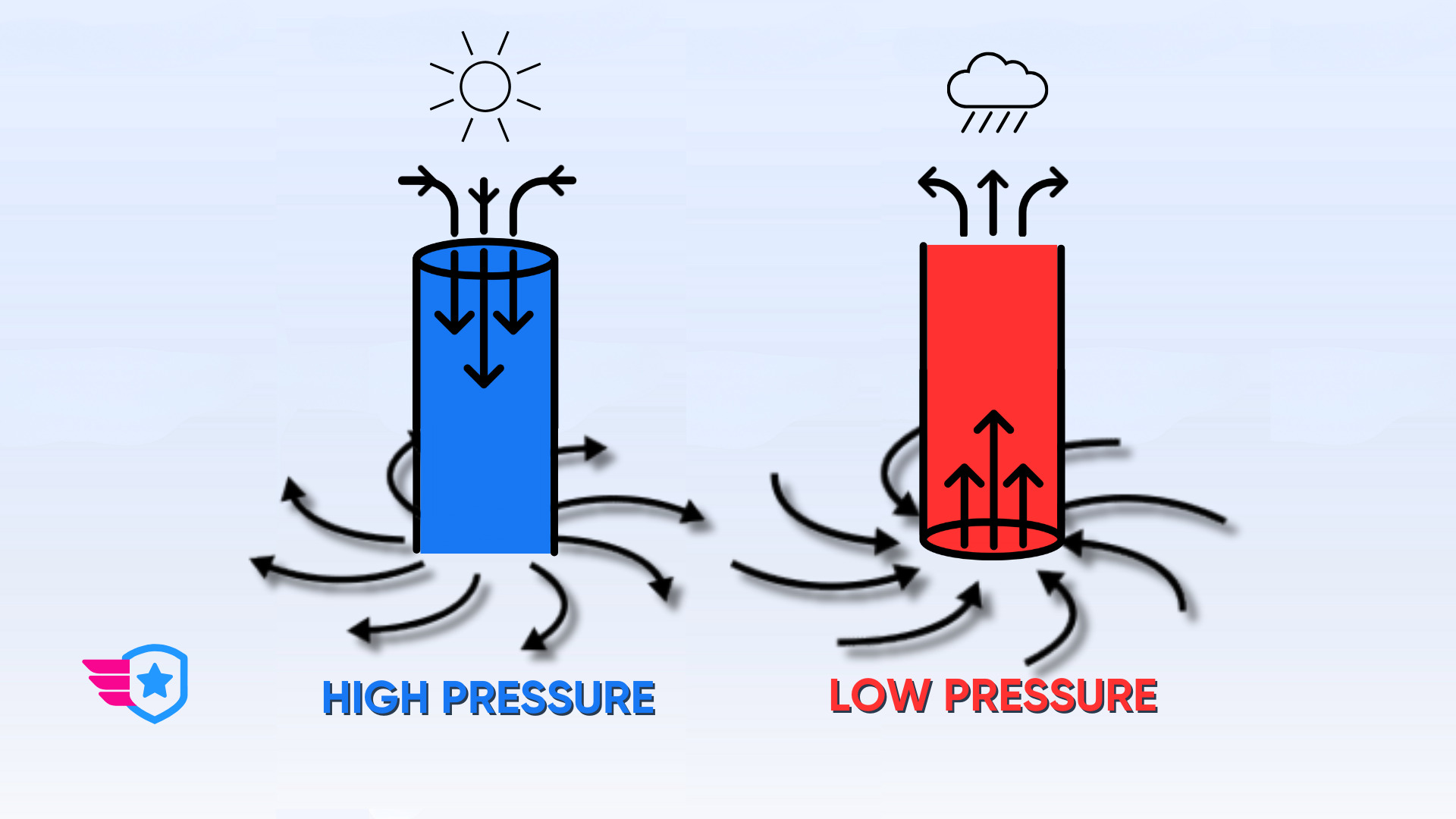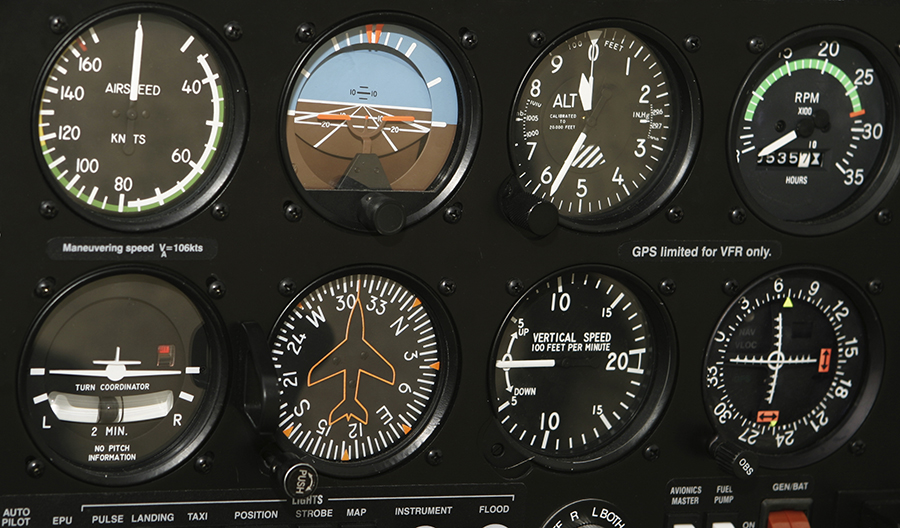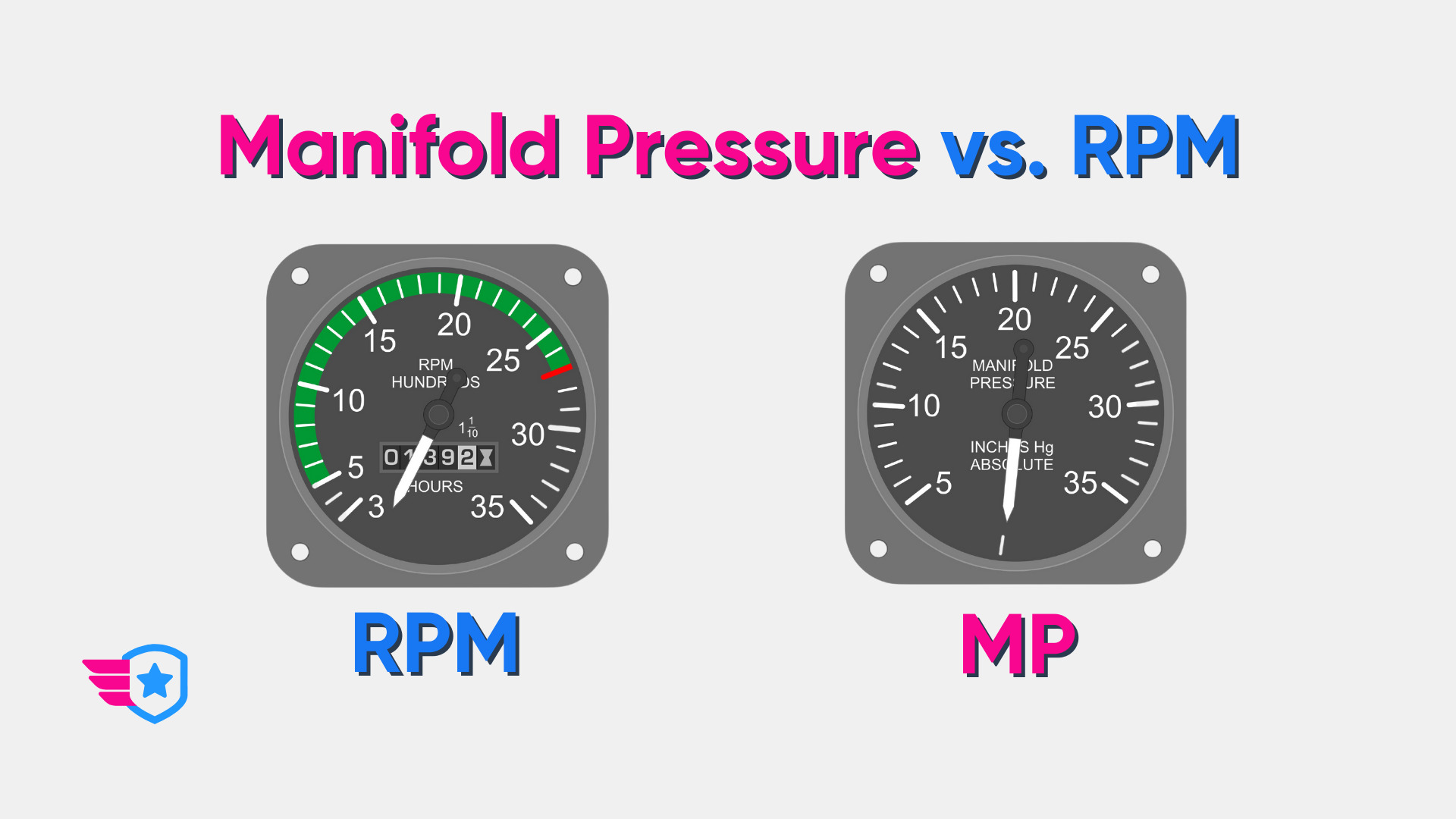-
Key Takeaways
-
Understanding Atmospheric Pressure
- Why Atmospheric Pressure Is Important to Pilots
-
The Difference Between High and Low-Pressure Systems
-
Low-Pressure Systems
- Characteristics of Low-Pressure Systems
- Flying in Low-Pressure Systems
-
High-Pressure Systems
- Characteristics of High-Pressure Systems
- Flying in High-Pressure Systems
-
Staying Safe in High and Low-Pressure Systems
- Pre-Flight Checks
- Stay Informed
- Use Onboard Tools
- Plan Your Route
-
Conclusion
Flying isn’t just about your stick-and-rudder skills, it’s about understanding the environment around you.
Some of the most influential forces in the air are high and low-pressure systems. These atmospheric pressure systems determine most of the weather you’ll encounter during your flight.
Yet, for many pilots, they remain a mystery.
In this article, we’ll demystify high and low-pressure systems so that you can anticipate weather patterns and become a safer pilot.
Key Takeaways
- Atmospheric pressure is the force exerted onto a surface by the weight of the air above it.
- The areas with lower pressure are called low-pressure systems, and those with higher pressure are called high-pressure systems.
- In high-pressure systems, air descends toward the ground, resulting in stable atmospheric conditions and fair weather.
- In low-pressure systems, air rises, often leading to more unstable air and poor weather.
- In the Northern Hemisphere, a high-pressure system rotates clockwise, while a low-pressure system has a counterclockwise rotation. This rotation is due to the Coriolis effect. It is the opposite in the Southern Hemisphere.
Understanding Atmospheric Pressure
To understand the difference between high and low-pressure systems, we have to understand atmospheric pressure in general.
Atmospheric pressure, often simply called air pressure, is the force exerted onto a surface by the weight of the air above it.
Imagine a column of air stretching from the ground up to the edge of space. The weight of this entire column creates pressure on the Earth’s surface. That pressure is what we refer to as atmospheric pressure.
At any given moment, some areas on the Earth’s surface have higher pressure compared to their surroundings, and some have lower pressure.
The areas with lower pressure are called low-pressure systems, and those with higher pressure are called high-pressure systems.
Take note that as you climb in altitude, there’s less air above you, which means the pressure also decreases. But pressure systems (high or low) refer to pressure differences on the surface compared to the surrounding area.
Atmospheric pressure is measured in inches of mercury (inHg) and millibars (mb) in the U.S.
Internationally, the hectopascal (hPa) is used.
One hectopascal (hPa) equals one millibar (mb), so it’s practically only a difference in name.
Why Atmospheric Pressure Is Important to Pilots
For pilots, understanding atmospheric pressure is crucial.
Not only does it influence weather patterns and systems, but it also affects aircraft performance.
For example, an aircraft will generally require a longer takeoff run at a high-altitude airport with lower atmospheric pressure.
Additionally, changes in atmospheric pressure can indicate shifting weather patterns. A sudden drop might hint at an approaching storm, while a rise could signify improving conditions.
Pilots use surface analysis charts that depict high and low-pressure systems to determine general weather conditions and trends over a large area.
The Difference Between High and Low-Pressure Systems
The most fundamental difference between high and low-pressure systems is the direction of air movement.
In high-pressure systems, air descends toward the ground, resulting in stable atmospheric conditions.
Conversely, in low-pressure systems, air rises, often leading to more unstable and unpredictable weather patterns.
Air also always moves from high pressure to low pressure. In other words, air converges in areas of low pressure and diverges in areas of high pressure.
In the Northern Hemisphere, a high-pressure system rotates clockwise, while a low-pressure system has a counterclockwise rotation. This rotation is due to the Coriolis effect.
All of these characteristics culminate in one fundamental difference between high and low-pressure systems:
- High-pressure systems bring fair weather, clear skies, and calm air.
- Low-pressure systems bring unstable air, clouds, and precipitation – ranging from light drizzle to heavy storms.
Now, let’s explore each pressure system in detail.
Low-Pressure Systems
Low-pressure systems are atmospheric zones where the air pressure is lower than that of the surrounding areas.
These systems are significant players in the weather game, often bringing about some of the more dynamic and challenging conditions pilots might face.
When you hear low-pressure, think of “bad” weather.
The closer you are to the center of a low-pressure system, the more significant the weather (wind, rain, etc.) will be.
Characteristics of Low-Pressure Systems
Vertical Movement
Remember how air always moves from high to low pressure? Because of this tendency, air converges toward the center of a low-pressure system.
The air also rises because of the reduced pressure.
Think of a low-pressure system as a vacuum that “sucks” air up and toward the center.
The rising of the air is the largest reason why low-pressure systems often bring clouds and precipitation.
As the air rises, it cools, and moisture within it condenses to form clouds and sometimes rain or snow.
Rotation (The Coriolis Effect)
In the Northern Hemisphere, low-pressure systems rotate counterclockwise due to the Coriolis effect.
The Coriolis effect is the apparent movement of wind due to the spinning of the Earth.
Because of the Earth’s rotation, winds don’t move in a straight line from point A to point B.
Instead, in the Northern Hemisphere, winds curve to the right, making winds rotate counterclockwise around areas of low pressure and clockwise around areas of high pressure.
In the Southern Hemisphere, it’s the opposite.
Think of it like throwing a ball to someone on the opposite end of a merry-go-round; the ball won’t go straight toward them – it will curve because you are spinning.
That’s what happens to moving wind on our spinning merry-go-round, the Earth.
Flying in Low-Pressure Systems
For pilots, a low-pressure system isn’t just a rainy day.
Low-pressure systems can bring turbulence due to unstable air, clouds and precipitation, and potentially hazardous conditions like icing or thunderstorms.
Interestingly, due to the unstable air in a low-pressure system, you can expect good visibility outside of clouds and precipitation.
Flying near or through these systems requires careful planning, keen awareness, and sometimes alternate decision-making, such as rerouting or delaying a flight.
High-Pressure Systems
High-pressure systems are atmospheric zones where the air pressure is higher than that of the surrounding areas.
High-pressure systems often feature stable air and fair weather conditions.
When you hear high pressure, think of “good” weather.
Characteristics of High-Pressure Systems
Vertical Movement
Unlike the rising air in low-pressure systems, high-pressure systems feature descending air.
Air in a high-pressure system also diverges. In other words, the air moves down and away from the center (toward the lower pressure surrounding it).
Think of a high-pressure system as a blow-dryer that blows air down and away from the center.
The sinking of the air keeps it warmer and suppresses cloud formation.
Rotation (The Coriolis Effect)
Remember the Coriolis effect?
In the Northern Hemisphere, the air in high-pressure systems moves in a clockwise direction due to this effect. In the Southern Hemisphere, it’s the opposite, with air rotating counterclockwise.
Flying in High-Pressure Systems
High-pressure systems usually mean less turbulence. The stable air associated with these systems reduces the vertical movement of air masses, making for smoother rides.
The clear skies of a high-pressure system can also lead to rapid cooling of the Earth’s surface, especially during the night. This can result in morning ground fog or frost on aircraft surfaces.
While high-pressure systems often promise clear skies, there’s a catch that you should be aware of.
Because of the stable air associated with high-pressure systems, any precipitation (like fog or haze) won’t dissipate as easily compared to the unstable air associated with low-pressure systems.
Sometimes, high-pressure systems can lead to temperature inversions where the temperature increases with altitude rather than decreasing. This can cause reduced visibility and affect aircraft performance.
Generally, the visibility in high-pressure systems isn’t that poor unless smoke is present from a nearby wildfire, for example.
Staying Safe in High and Low-Pressure Systems
Now that you understand the difference between high and low-pressure systems, how do you go about navigating them safely?
Here are a few tips to keep in mind.
Pre-Flight Checks
High-pressure systems often cause morning frost, while in low-pressure systems wet conditions can cause icing.
Check for frost, ice, or any anomalies during your preflight, and pay special attention if a large pressure system is present.
Stay Informed
Monitor METARs, TAFs, and other weather updates. Changes in pressure systems can be swift, and having the latest data ensures you’re not caught off guard.
Additionally, learn to interpret surface analysis charts. These charts allow you to predict the movement of atmospheric pressure systems and adapt your decision-making accordingly.
Use Onboard Tools
Make use of modern in-flight weather monitoring tools such as the FAA’s NextGen ADS-B network or SiriusXM’s satellite weather service.
These tools offer real-time weather updates (even via your tablet), which will help you detect and avoid areas of turbulence or adverse weather.
Depending on the type of aircraft you fly, you may even have onboard weather radar capabilities. Weather radar is a fantastic way to ensure you navigate significant weather conditions safely.
Plan Your Route
Anticipate the movement of low-pressure systems and adjust your route accordingly.
In general, try to fly around strong low-pressure systems.
If flying around a low-pressure system isn’t practical (and the system isn’t that significant), consider altitude adjustments to avoid the most turbulent areas or those with icing conditions.
Sometimes, a small change in altitude can make a significant difference in flight conditions.
Conclusion
Understanding the intricacies of high and low-pressure systems is more than just a theoretical exercise – it’s an integral part of safe and efficient flying.
By being informed, prepared, and leveraging modern tools, you can navigate these systems confidently.
Whether you’re a novice pilot or a seasoned aviator, always respect the forces of nature, stay informed, and prioritize safety.




